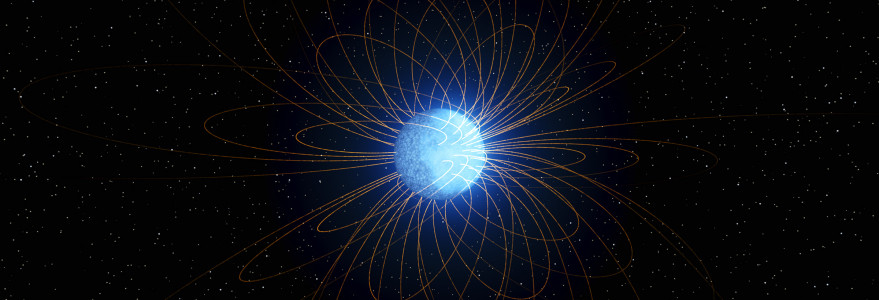An international team of astronomers has announced the discovery of an unusual white dwarf star that is made of hydrogen on one side and helium on the other. They reported their findings in the latest issue of “Nature”. Dr Przemysław Mróz from the Astronomical Observatory of the University of Warsaw is a co-author of the study.
White dwarfs are the scalding remains of stars that were once like our sun. “As the stars age, they puff up into red giants, but eventually their outer fluffy material is blown away and their cores contract into dense, fiery-hot white dwarfs. The sun will evolve into a white dwarf in about five billion years,” says Dr Przemysław Mróz from the Astronomical Observatory of the University of Warsaw, co-author of the publication in “Nature”.
In a first for white dwarf, astronomers have discovered that at least one member of this cosmic family is two-faced. One side of the white dwarf is composed of hydrogen, while the other is made up of helium. The newfound white dwarf, nicknamed Janus after the two-faced Roman god of transition, was initially discovered by the Zwicky Transient Facility (ZTF), an instrument that scans the skies every night from Palomar Observatory in California. The object stood out for its rapid changes in brightness that repeat every fifteen minutes.
Subsequent observations made with the W. M. Keck Observatory atop Maunakea in Hawaii revealed the dramatic double-faced nature of the white dwarf. The team used an instrument called a spectrometer to spread the light of the white dwarf into a rainbow of wavelengths that contain chemical fingerprints. The data revealed the presence of hydrogen when one side of the object was in view (with no signs of helium), and only helium when the other side swung into view.
What would cause a white dwarf floating alone in space to have such drastically different faces? The team acknowledges they are perplexed but have come up with some possible theories. One idea is that the scientists may be witnessing Janus undergoing a rare phase of white dwarf evolution.
“After white dwarfs are formed, their heavier elements sink to their cores and their lighter elements – hydrogen being the lightest of all – float to the top. But over time, as the white dwarfs cool, the materials are thought to mix together. In some cases, the hydrogen is mixed into the interior and diluted such that helium becomes more prevalent,” explains Dr Mróz.
Janus may embody this transition phase, but one pressing question is: why is the transition happening in such a disjointed way, with one side evolving before the other?
The answer, according to the science team, may lie in magnetic fields.
“Magnetic fields around cosmic bodies tend to be asymmetric, or stronger on one side,” says Ilaria Caiazzo, a postdoctoral scholar at the California Institute of Technology and lead author of the paper. “Magnetic fields can prevent the mixing of materials. So, if the magnetic field is stronger on one side, then that side would have less mixing and thus more hydrogen,” Caiazzo adds.
Another theory proposed by the team to explain the two faces also depends on magnetic fields. However, in this scenario, the fields are thought to change the pressure and density of the atmospheric gases.
“The magnetic fields may lead to lower gas pressures in the atmosphere, and this may allow a hydrogen ‘ocean’ to form where the magnetic fields are strongest,” says James Fuller, co-author of the publication and professor of theoretical astrophysics at Caltech.
To help solve the mystery, the team hopes to find more Janus-like white dwarfs in the data from current and future large sky surveys.
Details of the paper
I. Caiazzo, K. Burdge, L. Ferrario, P. Mróz, et al., A rotating white dwarf shows different compositions on its opposite faces, “Nature”, DOI: 10.1038/s41586-023-06171-9.



